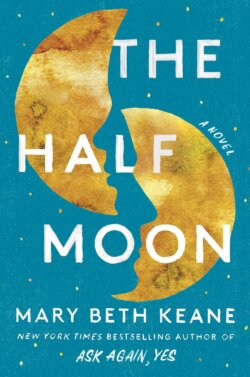Abby Jimenez’s Yours Truly is a sweet, simmering and sparkling slow-burn romance that exemplifies everything readers adore about her work: It’s one part tropey rom-com, two parts drama. The angst, the laughs and the characters are perfectly balanced as two bighearted doctors rediscover joy with each other despite being rivals for the same promotion.
Dr. Briana Ortiz is an emergency room superstar at Royaume Northwestern, one of the most prestigious hospitals in Minnesota. Her personal life, though, is a disaster. Between her soon-to-be ex-husband giving in to his secret, long-standing love for their mutual friend and her younger brother’s life-threatening kidney disease, Briana is barely keeping it together.
Into this chaos enters hotshot Dr. Jacob Maddox, who threatens the one good thing Bri’s been counting on: her promotion to chief of emergency medicine. Jacob’s gruff manner during their first interactions amplifies the offense. But, like Bri, Jacob is dealing with hefty personal baggage, namely the fact that his brother is engaged to Jacob’s ex-girlfriend. With both his ex and his brother in residence at his old hospital, Jacob needed a fresh start. But being an outsider at Royaume adds pressure to his chronic social anxiety.
Jacob and Bri’s tribulations are a lot, but they’re rendered with a meticulous authenticity. (Per the author’s note, several of their issues reflect challenges Jimenez herself has faced.) Briana’s emotional abyss is heart-rending. Once the divorce is final, Bri worries that “my rage would finally burn out, and I’d be left with what was left of me.” Jacob’s strain is just as affecting. His new job means dealing with the pressure of meeting new people and Briana’s instant hostility. And at family events, his brother and his ex rely on him to pacify Jacob’s fiercely loyal family. It’s a perfect storm of triggers, and Jimenez paints a realistic portrait of someone successfully coping. Jacob juggles pressures with generosity and grace: Early on, he writes an Austen-worthy apology letter to defuse the misunderstandings between himself and Briana.
Briana emotionally supports Jacob by pretending to be his girlfriend during his whirlwind of family obligations, and their connection blooms in truly lovely ways under the veil of platonic friendship and fake dating. Perhaps Yours Truly’s one weakness is that the burn is excruciatingly slow, even as the unresolved sexual tension sizzles. Their chemistry is both sweet and hotter than a brushfire, but Briana has tremendous difficulty seeing Jacob’s feelings. While her emotional blindness is understandable, given how it springs from deep hurt, readers may yearn for Bri and Jacob to spend more time enjoying their bright and sparkling energy as a couple. Still, Jimenez has created one of the finest cinnamon roll heroes ever written in Jacob, and Briana and Jacob’s tender connection and deep bond shines at the very center of Yours Truly.







































































